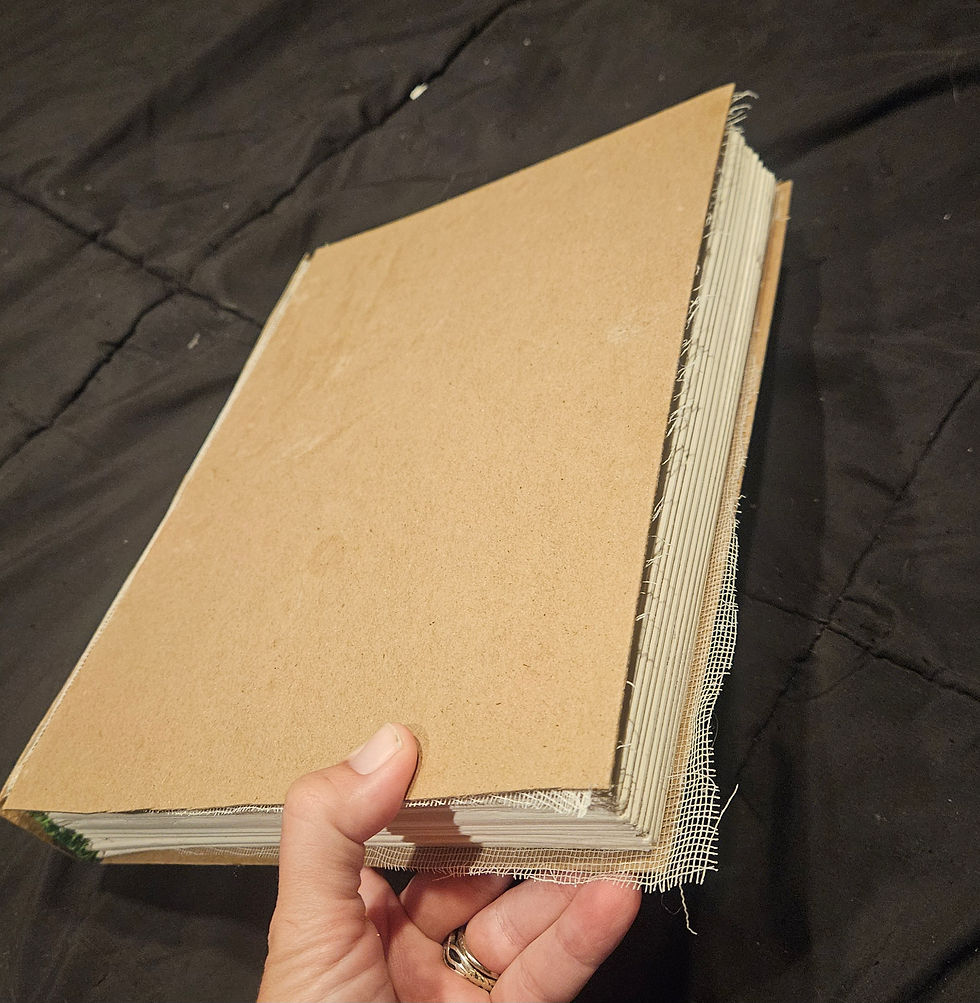The Ningon Wyrta Galdor- The Nine Herb Charm
- Dyrfinna

- Aug 25, 2024
- 4 min read
So as I write this blog things are going to get a bit "timey wimey" to quote a certain show about a interdimensional blue box. That is because whilst I am currently working on new A&S projects, I also have nearly three years of backlog work to log and talk about! I will endeavor to make sure that in each post is is very clear where in the timeline we are. Once I am past my backlog, things should get less confusing. I want to start off in the present with with my work with the The Ningon Wyrta Galdor, because, well, it just happened and it's fresh in my mind!

(The Lacnunga’, codex MS Harley 585 (folios 160r to 163v) British Library)
The Ningon Wyrta Galdor translates to the "Nine Herbs Charm." It is a healing ritual found in the Lacnunga, a leechbook (healing manual) from somewhere between 900-1000 CE. It is Anglo-Saxon and is written in old English. The original manuscript does still exist and currently resides at the British Library. The word "Galdor" (Galdr to the Norse) means a spell or incantation. (Stride, 2017) Throughout the medieval period, it was common for healing to require not only a physical application of a medicine, but to complete some form of ritual, or set of actions as well. This galdor would have been a song, and unfortunately the music is not known modernly. We also lose things like the original alliteration when we translate it to modern english. (Hopkins, J.S, 2023)
The piece is a fascinating look into the world view of the Anglo Saxons. This Galdor is a combination of art, mythology, herblore and healing and religion as well. Historically, it shows the cultural shift and conversion from paganism to Christianity that was happening at the time, which I find really interesting. The healing song takes the familiar form of a Norse or Germanic Galdor, and references Wodin, but also mentions Christ towards the end.
"A wyrm came slithering, and yet he killed no one,
for wise Wodin took nine glory-twigs
and smote the serpent,
who flew into nine parts!
There apple overcame venom:
There, the wyrm would never find shelter."
"Christ stood over illness of every kind.
Yet I alone know water running
where the nine serpents guard."
(Translation by Joseph S. Hopkins)
My Project:
For Festival of the Rose, I decided I wanted to re-create the herbal poultice from the Ningon Wyrtha Galdor, as well as do a deep dive on the herbs. In the end I made the poultice, grew 6 of 9 of the herbs, wrote profiles and re-created herbal paintings of four of them. The ritual aspect of the preparation involves saying the poem 20 times. You say it over each ingredient, (apple 3x) over your finished herbal concoction, and several times over your patient. I didn't have a patient, but I DID say the poem about 15 times for the prep recitations. If you are going to make it, might as well get the full experience, right?
The herbs are somewhat debated between different translations, but I went with: Mugwort, Chamomile, Plantain (the herb), Nettle, Wood Betony, Cress, Crabapple, Chervil and fennel.
The recipe, as most period recipes has no measurements or proportions. I chose a 1:1:1. I used 1 teaspoon each, because that is a fairly standard amount to use in modern tea-making for this set of herbs. According to the instructions the apple is the body of the salve. All the herbs except fennel should be dried and ground together. The fennel should be boiled in a paste of ash and water (essentially lye.) I chose to make my base with baking powder instead. Then everything is combined to make your poultice.
It came out quite well. My mugwort didn't turn to "dust" quite like I wanted, and even after a grinding was quite chunky. Admittedly after saying the poem with great bardic gusto the first time or two, by round 15, I was speeding though it with much less "oomph."



At the Event! FoTR was a lovely day. The art everyone brought was phenomenal, and the artisans for the most part hung out at their displays to chat with folks as they came by which is my favorite! I love hearing what people are passionate about! Also, giant shout out to my husband, who spent most of his day in the hot sun in the court yard watching out kids so I could nerd out at my table! Amusingly, because plantain is a common "weed" we find in lawns here, I was able to find one in the courtyard outside, which made my day. Below is a shot of my table at the event! At the end of the event, I was called into court and granted the Queen's Favor for my entry, which was a lovely surprise and honor!

If you would like to read my paper on the Nine Herbs Charm or plant profiles, you can find them here: The Ningon Wyrta Galdor Plant Profiles
References:
Hopkins, J.S. “The Nine Herbs Charm” — Mimisbrunnr.info: Developments in ancient Germanic studies (J. S Hopkins, Trans.). (2023, September). Mimisbrunnr.info: Developments in Ancient Germanic Studies. https://www.mimisbrunnr.info/nigon-wyrta-galdor
Niles, J. D., & D’Aronco, M. A. (2023). Medical Writings from Early Medieval England, Volume I: The Old English Herbal, Lacnunga, and Other Texts.
Stride, P., FRCPEd, FRCP, DMed (UQ). (2017). Anglo-Saxon medicine and the Nine Herbs charm in the twenty-first century. Indian Journal of Applied Research, Volume-7(Issue 10). https://doi.org/10.36106/ijar
The Lacnunga Codex MS Harley 585 Folios 160R to 163V. (900–1000). [Manuscript]. British Museum, London, England, United Kingdom of Great Britain and Northern Ireland. https://www.bl.uk/manuscripts/Viewer.aspx?ref=harley_ms_585_f160r Manuscript page


Comments